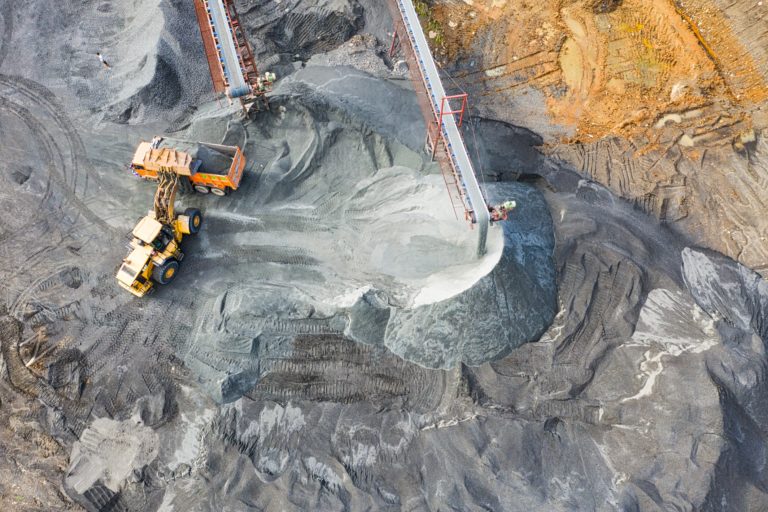Raw materials form the basis of goods and services and such of the consumption and investment by households, governments and businesses worldwide. In the period from 1970 to 2024, the global extraction of biotic and abiotic materials increased by more than 235 %, reaching an amount of 104 billion tonnes in 2024. Thereby, two distinct phases of material extraction can be identified: A period of modest growth between 1970 and 2002, with only a short period of stagnation caused by the collapse of the former Soviet Union; and from 2003 onwards, a period of significant increase in material extraction. To analyse patterns of extraction and consumption of materials a number of indicators do exist. To get a first insight it is useful to distinguish the types of raw materials and the geographical distributions of material extraction.
Types of raw materials
The wide range of materials consumed can be aggregated into the four main categories biomass, minerals, fossil fuels, and metals. An observation of the time series 1970 to 2024 shows that the global material consumption increased remarkably among all material groups.
Exceptional growth rates occurred among non-renewable materials, in particular regarding industrial and construction minerals (+429 %). This is due to the fact that, within the last decades, minerals played a core role in order to meet the demand for ongoing infrastructural improvements in energy and transport and construction work globally. Hence, the growth rates indicate the continued importance of industrial development and its material dependency, in particular for building up housing, energy and transport infrastructure in emerging economies. In order to satisfy the energy demand, consumption of fossil fuels also experienced a growth by more than 163 % within this time series. Intensified manufacturing processes explain these trends causing an increase in energy demand but also in metals, which have more than tripled between 1970 and 2024.
The extraction of renewable resources, accounted as biomass, increased by 114 %, representing the upcoming trend towards industrialized agriculture and forestry, biomass based energy production, and growing demand for feedstuff.
Note: Hover over the graph to view the respective values. To access and modify this visualisation open it via the visualisation tool.
The geographical distributions of material extraction
Monitoring trends of material extraction with regard to its geographical distribution pictures Asia´s remarkable share in global material extraction. The role of Asia increased since the early 2000s due to rapid industrialization of countries such as China and India. The overall material extraction in China, for instance, increased about more than 1250 % between 1970 and 2024. This trend is mainly driven by the extraction of metals (+3,500 %) and minerals (+3,900 %), reflecting tremendous developments in construction work and manufacturing. Today, about one third of the global extraction of raw materials takes place in China. Asia as a whole is responsible for almost 60 %.
During the time series 1970 and 2024, extraction shares of all other regions decreased or remained quite stable. One reason for the decline of other world regions such as North America or Europe is the substitution of domestic material extraction, particularly in the categories of metal ores and fossil fuels, by importing raw materials or processed goods from elsewhere. Developing regions, which extract and export large amounts of materials, such as Africa and Latin America, thus augmented their extraction without proportionally increasing their domestic material consumption. The only exception to the declining trend is Oceania, which increased its share slightly mainly due to the intensification of mining activities in Australia.
Note: Hover over the graph to view the respective values. To access and modify this visualisation open it via the visualisation tool.


